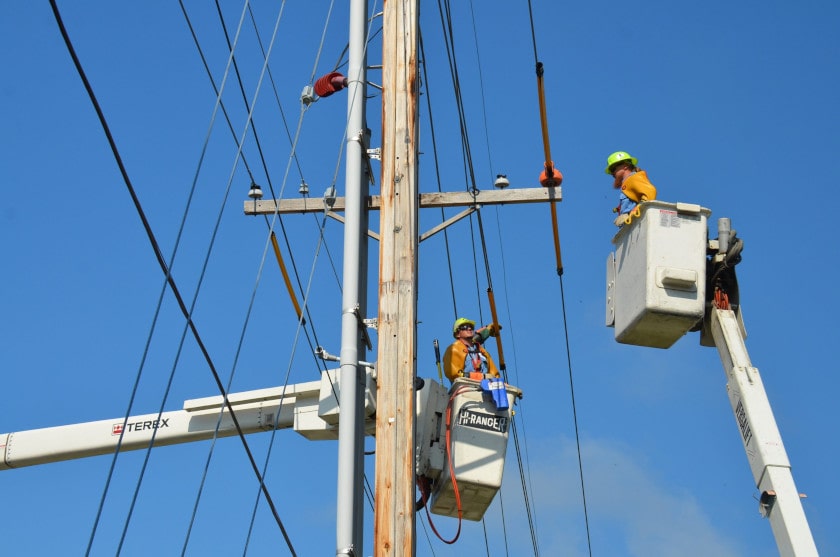The Utilities Industry Today: What You Need to Know

Utilities provide critical services that underpin our civilization. You might be able to go a few hours without email. How long could you survive without clean water and reliable electricity? To keep those services running smoothly, keep your eye on our predictions for utilities.
1. Internet of Things Expands in Utilities
In 2017, several billion Internet of Things devices were in use around the world. In the utilities sector, these devices will have an increased impact. For example, HomeServe uses Internet connected devices to deliver energy to consumers. The company also gives consumers the ability to control their heating directly from their phone. At utilities organizations, Internet of Things devices can be used to organize preventive maintenance for key assets.
How can utilities take advantage of Internet of Things technology? Start by identifying your most valuable assets — the critical equipment that keeps the lights on. Next, assess the impact of that equipment failing due to inadequate maintenance. Finally, explore ways to monitor that equipment with network connected sensors.
2. Increased Federal Spending on Infrastructure
Aging infrastructure keeps coming up in the news. Predicting how much money, if any, will flow from Washington to the utilities industry is a challenge. Recent infrastructure spending programs have delivered billions in funding.
In late 2016, several energy infrastructure projects worth billions of dollars were mentioned by the Trump presidential transition team as possibilities. Will that money flow in 2018? It’s a possibility that utilities managers will need to monitor closely.
3. Utilities are Under Pressure to Improve Cybersecurity Defenses
If utilities are disrupted, millions of people will be impacted. That’s why oversight organizations such as North American Electric Reliability Corporation (NERC) are increasing scrutiny on cybersecurity.
This evaluation extends to inspecting third party suppliers who provide products and services to utilities. The transition to a “smart grid” will also demand heightened focus on security.
To manage this risk, there are several strategies to consider. Commissioning a third party review and test will help you to detect your vulnerabilities. Improving your cybersecurity training program is another way to reduce your danger.
4. Amazon Expectations Arrive in the Utilities Market
In 2017, Amazon moved into the grocery market through its acquisition of Whole Foods. For the grocery industry, it was a tremendous change to competition. Will Amazon move into the utilities sector? We don’t know. However, we do see evidence of digital customer service coming to the utilities industry.
Companies like Octopus and HomeServe emphasize online customer service and flexibility. Falling behind in providing a seamless digital customer experience will be less tenable in 2018.
5. Renewable Energy Becomes a Major Player
Twenty years ago, renewable energy did not get much respect from established companies. That is all starting to change.
China is behind much of the growth in renewables. An estimated 40% of global growth in renewables is traced to China. That’s understandable because Chinese cities are struggling with the impact of pollution.
For utilities, there are several ways to exploit the renewables opportunity. For companies with renewables in their portfolio: advertise that fact, because it will attract the attention of some consumers. For companies that lack renewables, seek out investment opportunities.
6. AI Will Transform the Energy Market
Artificial intelligence isn’t ready to take over the world. However, it may be ready to have an impact on utilities. For energy consumers, AI lifts the burden of attempting to optimize their homes. Specifically, Amazon Alexa and similar consumer devices are bringing new computing capabilities to the home.
From the utility standpoint, the Grid-Interactive Electric Thermal Storage (GETS) system built on Microsoft technology relies on cloud services and AI to improve energy management autonomously.
If AI is difficult to understand, focus on the a few market ready applications. First, commercial AI is excellent at making recommendations based on user behavior (e.g. think of recommendations from Amazon and Netflix). Second, AI tends to work best when there is a large volume of data available for the system to use. AI has been used to increase revenue by testing different marketing offers and cutting costs.
Which Prediction Will Matter for Your Utility in 2018?
Staying current on new technologies and political changes is nothing new to the utilities industry. Consider these predictions from a risk standpoint. There is risk of lost opportunities if other companies move faster than you to take advantage of these trends. Keep these issues in mind as you plan your strategy for 2018.
Ready to take your utility company to the next level? Get started with mobile forms.